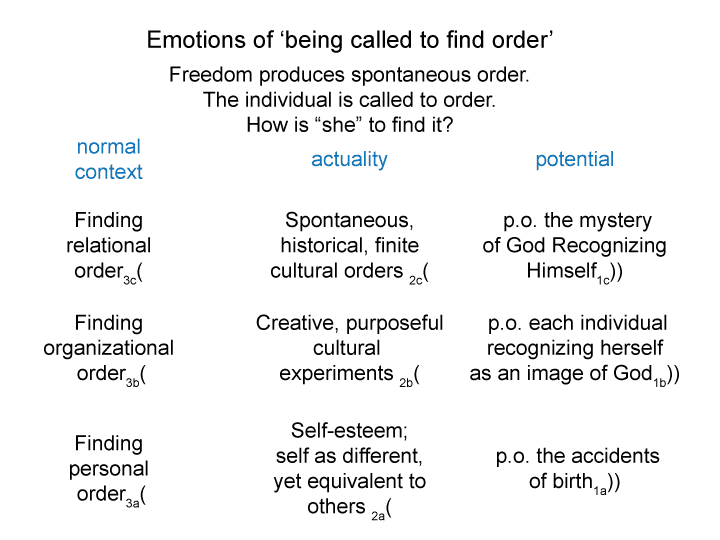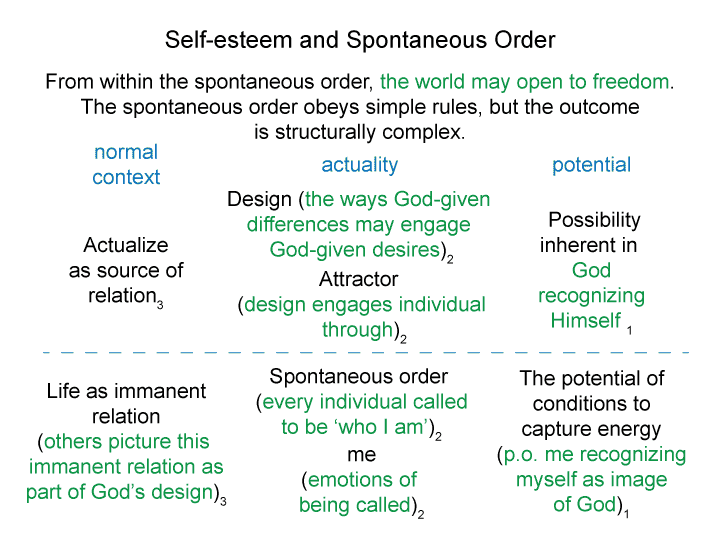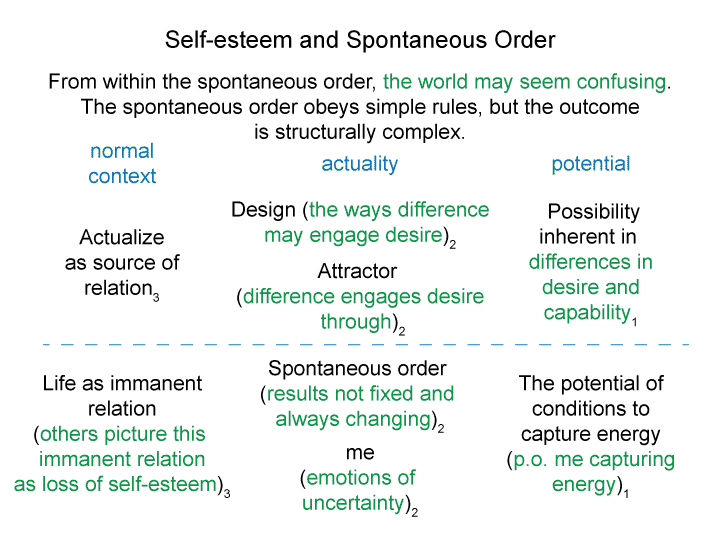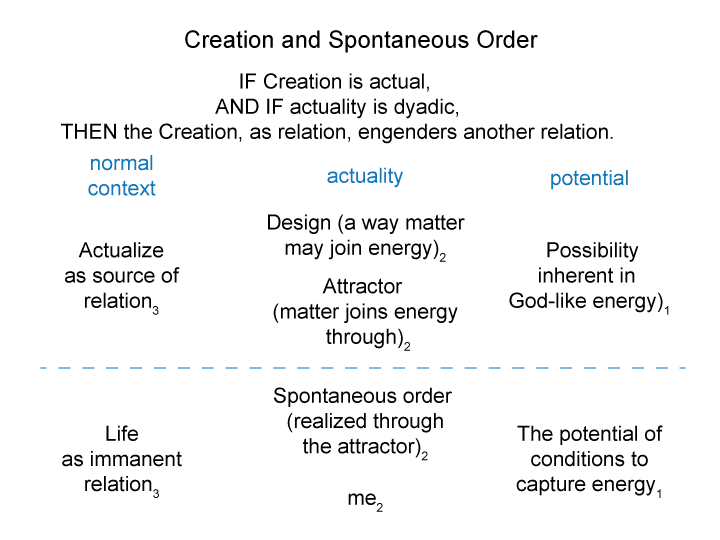Man and Sin by Piet Schoonenberg (1964) 2.1CS
[Progressives decrease the liveliness of the spontaneous order by imposing ‘fairness’ with respect to material and immaterial limitations. They act as if ‘they are able to adjust spontaneous orders to suit their organization objectives’. They act as if self-esteem is a thing or a state of things.
Normal contexts are limited, and limiting. They are tailored to fit a Progressive designation.
‘Self-esteem’ is not situated by ‘recognizing myself as an image of God’. It is a thing to be manipulated. It is a thing to be directed according to various religiousinfrasov organizational goals.
For example, in America, race and gender awareness mimics tribal affiliation. Identity-based affiliations are supposed to increase self-esteem, according the Progressive’s definition of the word ‘self-esteem’.
Progressives diminish everyone in ‘their implementations of cures for our lack of self-esteem’. Consequences do not matter. They are religiously driven to impose their cures on all society.]




